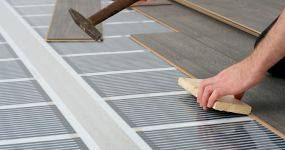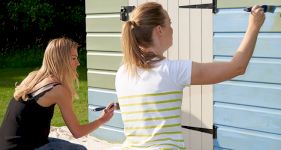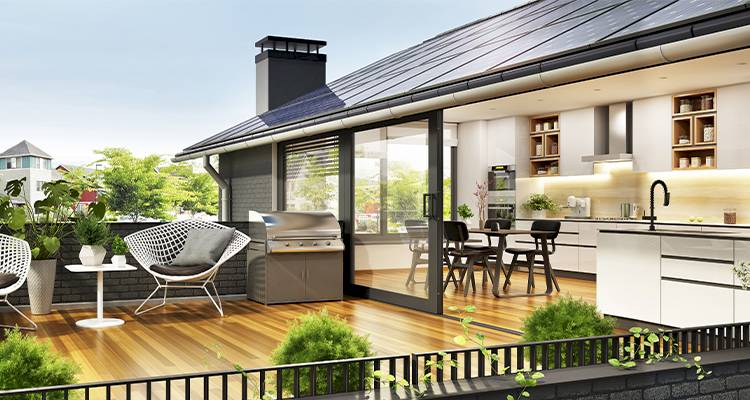Cost To Install Velux Windows: Homeowners Velux Window Prices
- Average cost for a Velux window is £1100
- It will take about 1 day to complete
- A breakdown of pricing information for different types of skylight and velux windows
- How long the job will take and a general overview of what the job entails
- Types of materials and finishes and how much they cost
Adding a Velux roof window to your home turns a darker space into a light and airy vibe. It adds value to your property – even with cheap roof windows, providing a natural ventilation system as long as you install a window that opens.
So, how much do Velux windows cost?
- Prices can range from £655 for a small window, including labour costs for 6-8 hours work.
- For the larger balcony option, prices can increase to £3470 for 1-2 days’ work – if the contractor needs third-party scaffolding, expect to pay a further £500.
If you want to find a tradesperson to fit a Velux or skylight, check out MyJobQuote's professionals here.
For a more detailed cost breakdown, check out the complete guide below!
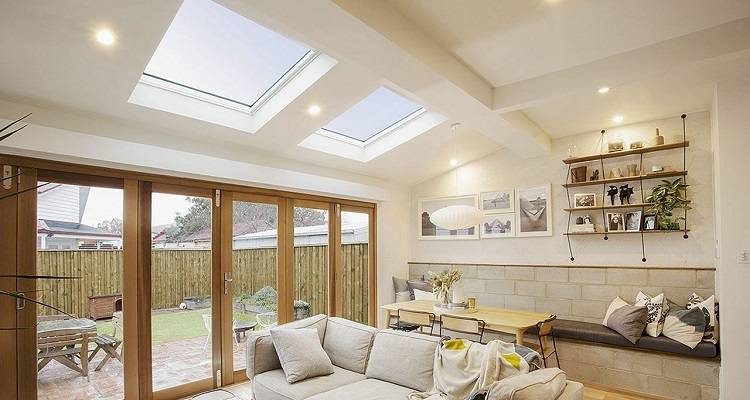
£1100
Table of Contents
- How Much Do Velux Windows Cost?
- Labour Costs and Timescales
- Supply Costs
- Additional Costs
- Cost Factors of Installing Velux Windows
- What's Involved in Installing Velux Windows?
- Are Velux Windows Worth it?
- Types of Skylight
- Types of Glass for Velux Window & Skylights
- Interior Finishes for Velux Window & Skylights
- Exterior Finish for Velux Windows & Skylights & Skylights
- Manual, Electric or Solar Powered Velux Window & Skylights?
- Skylight Repair Cost
- Hiring a Velux Window Fitter Checklist
- FAQs
- Sources
How much would you be willing to pay for a Velux Window Installation?
How Much Do Velux Windows Cost?
The overall cost of Velux windows can depend on a multitude of factors from the number of windows you have installed and their size, the materials used, labour costs based on your location, among others that will be included in this article.
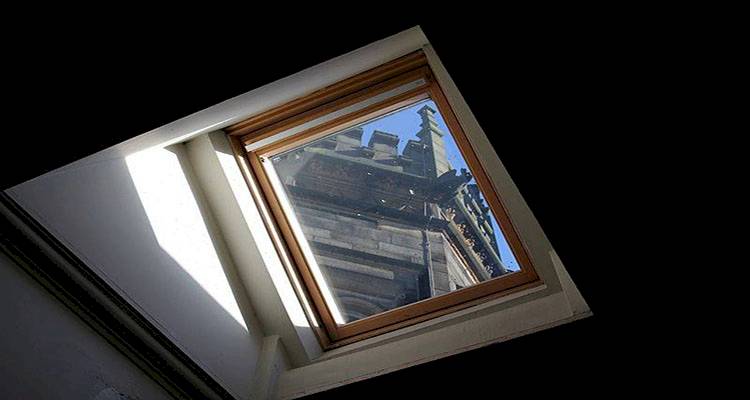
Velux is synonymous with the style, but it the brand name of the company rather than the window as Tannoy is to public announcement system or Hoover for vacuum.
Velux is arguably the most popular choice as it comes in a variety of styles and prices suited to your budget. Choices include:
- Roof terrace
- Electric top-hung
- Balcony
- Centre pivot
- Top-hung
- Electric
- Solar powered roof windows
These windows are available in a wide range of finishes – both in terms of interior surfaces; painted wood, wood finish and white polyurethane and exterior finishes; aluminium, copper, titanium zinc and coloured aluminium. Choose from:
- Safety glazing
- Noise reduction
- Energy efficient
- Enhanced noise reduction
- Premium opaque coating
Finally, there are the operation methods which consist of manual, electric and solar powered. As there are so many choices, let’s take a look at a more thorough breakdown of the prices you can expect to pay.
Velux Window Price
Do note that the variables are incredibly high; you could opt for a centre pivot window with manual control, white painted finish with standard glass, which costs £330. Change the glass to extra noise reduction and the price increases to £630.
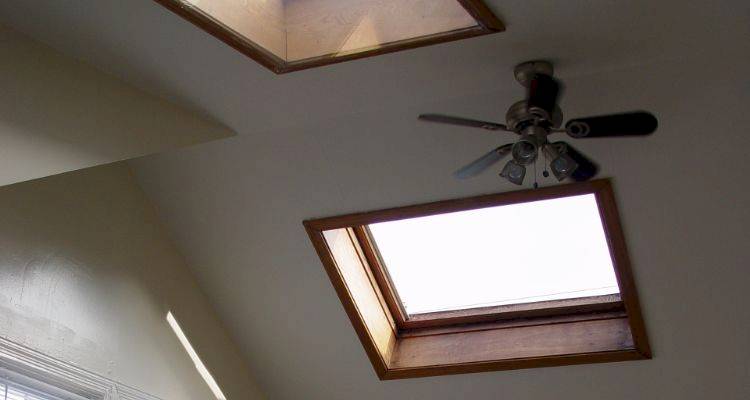
The following tables give a selection using the most common sizes: a small window measuring 66cm x 98cm (the VELUX FK04), and a larger window with the dimensions 134cm x 160cm (the VELUX UK10). *note that not all sizes are available with each method and alternatives are listed*
| Velux Window Example Setup | Small | Large |
|---|---|---|
| Top-hung, manual control with white painted interior/exterior and standard safety glass. | £755 *smaller size 55x98cm* |
£995 |
| Top-hung, manual control with a pine finish interior/exterior and extra low energy glass. | £955 | £1195 |
| Centre pivot, manual control with white painted interior/exterior and standard safety glass. | £655 | £815 |
| Centre pivot, solar powered control with white polyurethane interior/exterior and extra low energy glass. | £1155 *Only available with standard safety glass* |
£1555 |
| Balcony, manual control with white painted interior/exterior, side units, triple glazing with anti-dew coating and flashings. | £3050 *smallest size 78x252cm* |
£3470 *larger size 114x252cm* |
Labour Costs and Timescales
The previous section includes the average price for supplies and labour, but as a general rule of thumb, the install price will be £325 a day for the work to be completed (expect prices to increase for London and South East areas).
- £200 is the daily cost for a skilled tradesperson.
- £100-£125 is the average daily cost for a labouring assistant.
As long at the property has ease of access and no additional work is required such as moving furniture out of the way or ensuring that the space is safe to work in, these costs tend not to escalate and usually a controlled job.
With two people completing the job, the timescale you’re looking at averages 6-8 hours to complete. That time can differ if the following occurs:
- The room isn’t ready, i.e. furniture hasn’t been moved, and the contractors are unable to gain access internally.
- If the roof doesn’t appear strong enough, they may need to reinforce the rafters or even use smaller windows than planned.
- Balcony setups are a larger job and are unlikely to be completed in 6-8 hours, more likely 1.5 days or more.
- Additionally, windows will add to the time, but all the work can be completed at the same time so will not add too much time to the project – unless installing two balcony windows!
- The size of the window will affect the job in two scenarios: whether there is enough space to install one or more, or whether the roof can structurally support it.
- One other area worth noting is that in order to stay within the permitted planning permissions, builders need to adhere to the rules. Consulting the Planning Portal online will verify the requirements.
Most jobs are done internally, but larger operations or hard to reach places may need scaffolding. Unless the contractor provides this service, it could cost around £500 from a third party, though work can usually be completed within the day.
Supply Costs
Velux window sizes and prices are quite overwhelming. The cost of the supplies will be purely down to the size of the window(s) you require and the finishes that are applied.
- In comparison, a small Velux FK04 centre pivot with standard options and manual operation will cost around £330.
- The very same setup with a solar option being the only amendment will cost £750.
- Factor in an average of £325 for a tradesperson and labour assistant and the price adds up.
Below is confirmation of the prices you can expect to pay without the costs of labour. Following this list includes the additional costs you can come to expect.
| Velux Window Example Setup | Small | Large |
|---|---|---|
| Top-hung, manual control with white painted interior/exterior and standard safety glass. | £430 *smaller size 55x98cm* |
£670 |
| Top-hung, manual control with a pine finish interior/exterior and extra low energy glass. | £630 | £870 |
| Centre pivot, manual control with white painted interior/exterior and standard safety glass. | £330 | £490 |
| Centre pivot, solar powered control with white polyurethane interior/exterior and extra low energy glass. | £830 *Only available with standard safety glass* |
£1230 |
| Balcony, manual control with white painted interior/exterior, side units, triple glazing with anti-dew coating and flashings. | £2400 *smallest size 78x252cm* |
£2820 *larger size 114x252cm* |
Additional Costs
There’s a surprising amount of additional materials required for installing a Velux window – most of them being a paramount addition to the job. Below is a non-exhaustive list of other costs you may encounter to the window and labour costs.
| Additional Material | Cost |
|---|---|
| Scaffolding (not typically required) | £500 a day for aluminium towers |
| Flashing kit | £100-150 |
| Individual tiles | 60p-£1 per tile |
| Blinds | £80-140 |
| Telescopic pole to open the window | £20 |
| Solar conversion kit | £180 |
| Vapour barriers to prevent condensation | £54 per 37.5m2 |
| Roofing felt 50m x1.5m | £75 |
| Sealant to make waterproof | £3-£6 |
| Roller shutter | £330-£520 |
Cost Factors of Installing Velux Windows
Several factors impact costs. Depending on the location and time required, the dimensions of materials are a key factor when designing a Velux window if available or accessible to the general public:
Size of Window
There is a lot of options to choose from when it comes to the size of the window. The smallest Velux window, most suitable for a smaller room, starts at 47x55cm, whereas the balcony option exceeds to 238x252cm.
The latter is expensive but offers more light and dramatically increases the value of the property as you are essentially adding a balcony to the property. Smaller windows are arguably better suited for ventilation and saving on energy costs more than for aesthetic reasons.
Type of Window
As mentioned above, due to the sheer size of that these windows can increase to, the form factor changes. In the balcony option, it is exactly that, and the windows unfold to create a pseudo space for your home.
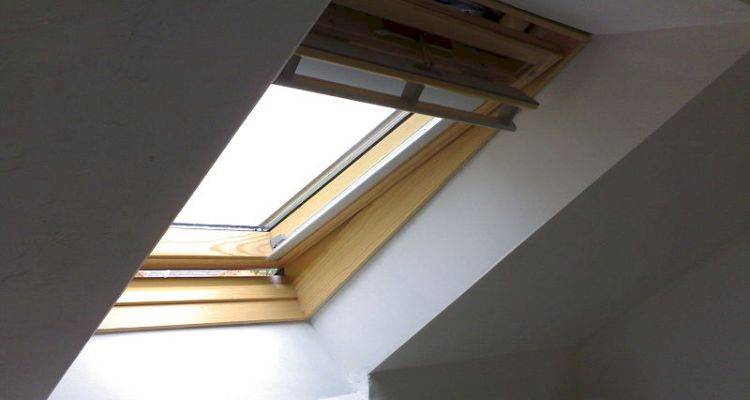
The most common type is the centre pivot. The window sits in the centre of the frame, effectively opening the top and parts of the window and is the cheapest option. The second is the top-hung; slightly more expensive as the window opens from the top allowing the window to open fully, operating as an emergency escape point too.
Ease of Access
Fitting Velux windows shouldn’t be a complicated procedure as almost all of the work is completed internally. Still, if the workers can’t gain access to certain parts of the roof, there may be the need to install scaffolding.
This will allow better access to the outer part of the property, make transporting the new windows and removing the existing ones, if applicable, both easier and much safer. As has been reiterated, most contractors can provide these in their fees, but third-party options usually come in at £500 per day.
Number of Windows
Sometimes it is more efficient to add two smaller windows instead of one larger. The primary reason for this is the structure itself needs to be able to support the weight of the window.
Interestingly, while this creates more work as two areas need to be prepared instead of one, it doesn’t add too much time to the job – potentially 3-4 hours is a reasonable ask. As most contractors charge at a daily rate, the labour costs don’t cost any extra, but you will need to purchase another window and the supplies that go with it.
Waste Disposal
Most quotes will include the disposal of an older window if you are having it replaced (ensure that you get this in writing upfront). Bear in mind that a lot of these windows can be salvaged so you could always sell on an online auction site, or locally Prices can stem from £30-£220 depending on the model and condition.
You can expect to pay £10-£20 extra on average to take to the local refuse point, along with any additional refuse from the refit if the price isn’t in your quote. Alternatively, you can arrange the local authority to collect on the next refuse collection – prices vary according to region, but some will take for free.
What's Involved in Installing Velux Windows?
Velux windows installation is more time consuming than complicated, though that shouldn’t undermine the works as it’s imperative to maintain the strength in the existing structures and following Building Regulations. That said, the following lists the steps:
Removal of Existing Felt/Membranes and Tiles
An area needs to be marked out where the window will be installed. It begins with marking on the rafters the outline of the frame, then the centre point and cutting through the existing roof membrane to the tiles.
Slowly removing each roof tile until the battens are exposed, the battens are cut alongside the rafters, allowing further access to the outside area and to create the space where the frame will be affixed. Tiles are moved past the cut-out area, allowing for the flashing to be installed.
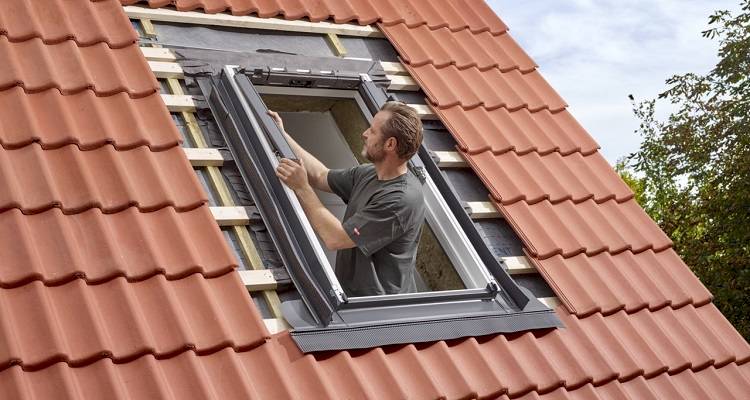
Installing the Frame
Trimmings are installed around the openings, infilling around the rafters to ensure that the area is squared off so that the frame can sit flush. Removing the sash, the opening part of the window that pivots, the remaining part of the frame is secured to the battens so that it sits on top, then firmly screwed into place.
Once in place, the flashing is installed around the frame and blended in with the remaining tiles. The lower section is installed first, working up to the top. Any additional work on the tiles can be completed at this stage as the next step is to reinstall the sash.
Affixing the Sash and Making Good
The final steps include reinstalling the sash and attaching to the pivot mechanism and lining everything back up. Depending on the setup inside, lay new membranes if necessary and making good any other work that needs completing.
Two windows can be connected next to each other, but in most situations, they are separated, allowing more light in and they don’t put added pressure on the roof.
Are Velux Windows Worth it?
Installing a Velux window or two into your property will mostly add natural light to a room and is cost-effective regarding energy bills. However, that’s not the only benefit, as it can also add value to your property, among other benefits.
Add Natural Light into the Property
Natural lighting is visually appealing. Depending on where the window is located, you could end up with more light than anticipated, but it’s a brightness that’s welcomed over the glare of a lightbulb!
Better Ventilation
Letting in the summer breezes instead of a desktop fan circulating old air, that makes a whirring sound is much more desirable. Extra ventilation will help change the stale air of a room, equally making it much more efficient in terms of energy in particular seasons.
Save on Energy Bills
While it’s not commonplace to have air conditioning in domestic buildings in the UK, so many households rely on fans to keep cool and circulate the air; obviously using electricity.
- Simply opening a window cuts that costs – the same as it does for having so many lights on at the same time.
A Velux window or similar skylight window is positioned at an angle maintaining your privacy so there will be many occasions where you can rely on the light of the moon and stars rather than a light bulb to light the room.
Looks Good
On the outside of the property, these windows are also aesthetically pleasing as it breaks up the monotony of tiles or dull, uninspired roof tops. Installing Velux or another type of skylight will also add value to your property.
Get Rid of Mould/Mildew
In addition to a fresh supply of air into a room, the likelihood of condensation also drops – linking to the energy efficiency of these windows.
- In turn, this will help get rid of mould and mildew and require less maintenance.
While extractor fans have their uses, opening a window after a shower or cooking will help prevent mould and mildew.
Types of Skylight
There’s quite the selection when it comes to skylights in general, and below we look at the main types, listing their advantages and disadvantages.
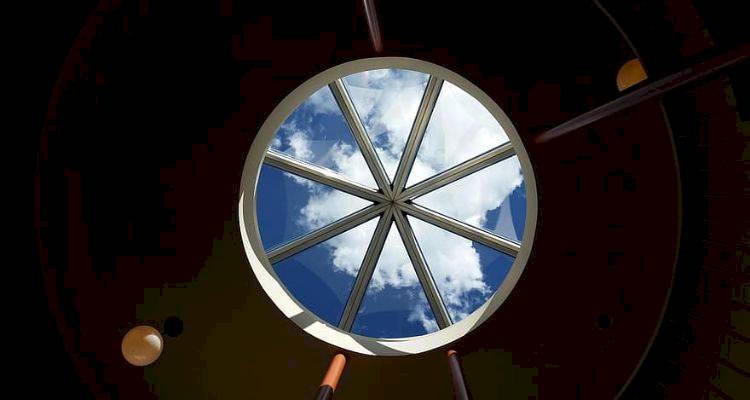
Roof Terrace
Roof terraces resemble the Velux balcony option, though rather opening out like a concertina effect, the windows follow the contours of the room and open up liked a large hinged doorway.
Pros
- ✔ Really floods the room with natural light.
- ✔ Easy access to the balcony.
Cons
- ✖ If inadequate blinds are installed, the light can be blinding.
- ✖ Lack of privacy.
- ✖ High costs.
- ✖ Requires an enormous amount of space.
Electric Top-Hung
Operated either with a remote control or fix a switch, these options are exactly the same as a standard top-hung but with the benefit of being able to be controlled electrically and without using a pole.
Pros
- ✔ Convenient and doesn’t require manual operation.
- ✔ The window opens completely.
- ✔ An additional escape route in the event of a fire.
- ✔ Unobstructed views.
Cons
- ✖ Highlights a safety issue as children may be able to fall out.
- ✖ The weight of the window is placed on one pivot.
- ✖ Unless blinds are installed, the light can be blinding at times.
- ✖ Harder to clean than a centre pivot.
- ✖ Unable to operate in a power cut.
- ✖ When fully extended, vulnerable to strong winds.
Balcony
The balcony setup can be a little more involved than a simple pivot window as the balcony can comprise of fixed frames and pivoted panes.
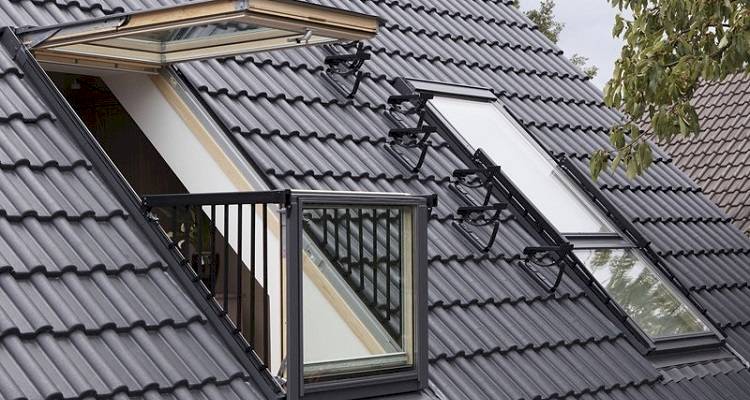
Pros
- ✔ Allows plenty of light into a room.
- ✔ Added space where limited.
Cons
- ✖ Temporary space; not an affixed, permanent space.
- ✖ Very costly.
- ✖ Requires adequate space and secure structure.
Centre Pivot
This is one of the most popular models where the pivot sits in the middle of the frame, allowing the window to be tilted allowing ventilation through the top and bottom.
Pros
- ✔ Most cost-effective option.
- ✔ Easy to clean and maintain.
- ✔ Easy to install (for a professional).
- ✔ Better security as difficult for people intruders to get in.
Cons
- ✖ Can’t be considered an escape point as doesn’t open fully.
- ✖ Can amplify outside noises such as the rain.
- ✖ Unless blinds are installed, the light can be blinding at times.
- ✖ Manual operation.
- ✖ Roof leaks if not closed correctly.
Top-Hung
Similar to the centre pivot in every way, only the window opens up from the top hinge, meaning the window opens completely. This has an added benefit of an escape located in the event of a fire.
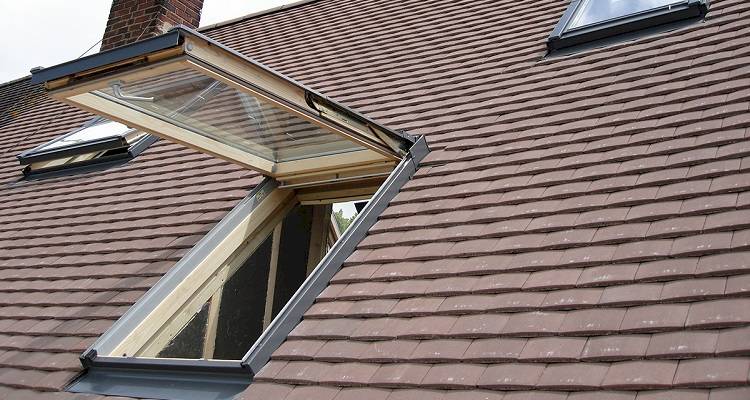
Pros
- ✔ The window opens completely.
- ✔ An additional escape route in the event of a fire.
- ✔ Unobstructed views.
Cons
- ✖ Highlights a safety issue as children may be able to fall out.
- ✖ The weight of the window is placed on one pivot.
- ✖ Unless blinds are installed, the light can be blinding at times.
- ✖ Harder to clean than a centre pivot.
- ✖ Manual operation.
- ✖ When fully extended, vulnerable to strong winds.
Electric
Electric applies to most of the options and is more a luxury as all the windows can be operated manually. However, this can be a nuisance and also risks the user getting hurt if they are accessing at an elevated height. Best for convenience, if the budget allows it.
Pros
- ✔ Convenient and easy to use.
- ✔ Can be set up with smart home apps.
Cons
- ✖ Adds to energy consumption.
- ✖ Expensive to install.
Solar Powered Roof Windows
Similar to the electric option, but the most expensive, solar powered roof windows save money on energy costs long term and are better for the environment. The panels themselves are quite subtle and many would argue that they look good too.
Pros
- ✔ Cost-effective long term.
- ✔ Reduces energy costs.
- ✔ Discreet and environmentally friendly.
- ✔ Best location for solar energy!
- ✔ Can be set up with smart home apps.
Cons
- ✖ Expensive initial costs.
- ✖ The UK doesn’t get that much sun.
Types of Glass for Velux Window & Skylights
Continuing with the many available options for your new Velux window is the type of glass available. By default, all Velux loft windows have a standard safety glass, but there are energy efficient choices too, among others.
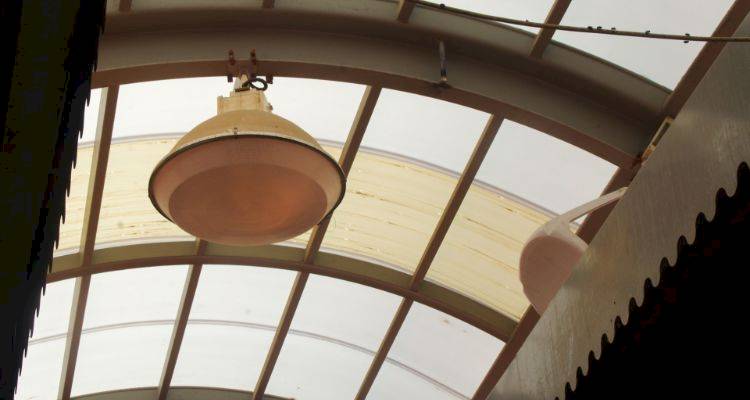
Safety Glazing
The standard glazing installed in all Velux installations by default is the safety glazing. It’s a cheap option, not the most energy efficient, but perfectly adequate for most households.
Pros
- ✔ The standard option and therefore the most cost-effective.
- ✔ Easy to maintain.
Cons
- ✖ Doesn’t cancel outside noises.
- ✖ Least energy efficient.
Noise Reduction
Due to the positioning of most skylights, due to the angle they sit at, they amplify outside noises that perhaps may have been ignored before – notably the wind and rain.
Pros
- ✔ Actively reduces outside noises.
- ✔ Usually triple glazed
- ✔ Energy efficiency
- ✔ More secure
Cons
- ✖ The price.
- ✖ No guarantee that it will cancel all sounds out.
Energy Efficient
Energy-efficient windows will save you money in the long run. By default, Velux windows offer this, but the panes used in these windows protect against loss of heat in the winter months and protect again overheating in the summer months.
You can see more in the Velux window price list.
Pros
- ✔ Cost-effective long term.
- ✔ Reduces condensation.
- ✔ May offer some reduction in noise.
Cons
- ✖ Expensive.
- ✖ Other areas of the home may still be energy inefficient such as poor loft insulation, making these windows redundant.
Enhanced Noise Reduction
Additional layers are used in this method to further cancel out noises. It has the added benefits of being energy efficient and offers another layer of security, but noise leakage can still get through other parts of the house.
Pros
- ✔ Further layers of glass cancel out sound.
- ✔ Improvement to energy usage.
- ✔ Reduces condensation.
Cons
- ✖ More expense.
- ✖ Not guaranteed to cancel out all noise.
Premium Opaque Coating
Pros
- ✔ Offers an additional layer of privacy.
- ✔ Energy efficient.
- ✔ Protects against harmful UV light.
Cons
- ✖ Less sunlight in the winter months.
- ✖ Will impact your view of outside.
Interior Finishes for Velux Window & Skylights
By default, Velux window interiors are often constructed in wood, but they are usually painted. There is of course the option to have natural wood to make it more visually pleasing and sometimes it’s easier to maintain.
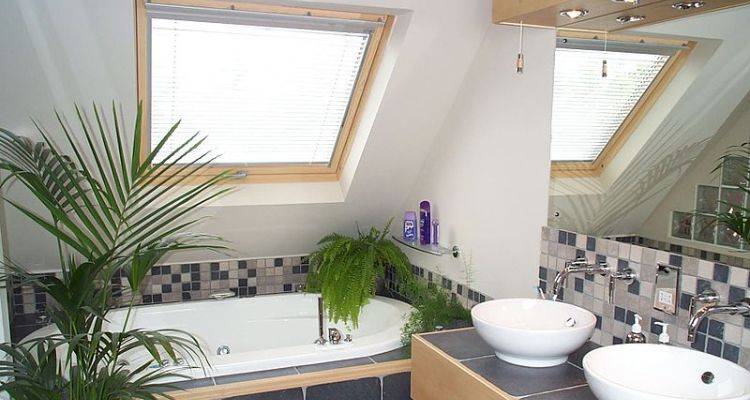
For those with the added budget, polyurethane is much harder and may be the better option.
Interior
Comes as standard with all Velux window prices, offering a pleasant appearance, but does require touch-up work overtime.
Pros
- ✔ Usually white but can be colour coded to match the room.
- ✔ Standard option and the lowest price.
Cons
- ✖ Requires a fresh coat of paint over time.
- ✖ Vulnerable to rotting and damp.
Wood Finish
Similar in price to painted wood and usually available in the more affordable pine, a wood finish can be aesthetically appealing to most, but doesn’t handle damp or rot very well.
Pros
- ✔ Visually pleasing.
- ✔ Doesn’t rust.
- ✔ Default material is pine, but available in other options.
Cons
- ✖ Requires treatment to maintain finish.
- ✖ Prone to rot and damp problems.
- ✖ Certain woods can be expensive.
White Polyurethane
Common in most double glazing due to its many resistances and energy efficiency. Polyurethane can’t be easily customised so is available as standard in white and also has a weakness to warping.
Pros
- ✔ Energy efficient as included insulation.
- ✔ Easy to maintain.
- ✔ Non-corrosive and UV resistant.
- ✔ Prevents condensation.
Cons
- ✖ Cannot be coloured.
- ✖ Possible expansion in extreme heat.
- ✖ Prone to warping.
Exterior Finish for Velux Windows & Skylights & Skylights
Opting for a cosmetic solution isn’t always a priority as often you are unable to see the windows from ground level, but that doesn’t restrict the many options available. On a more practical note, certain materials do offer better resistance and have more durable.
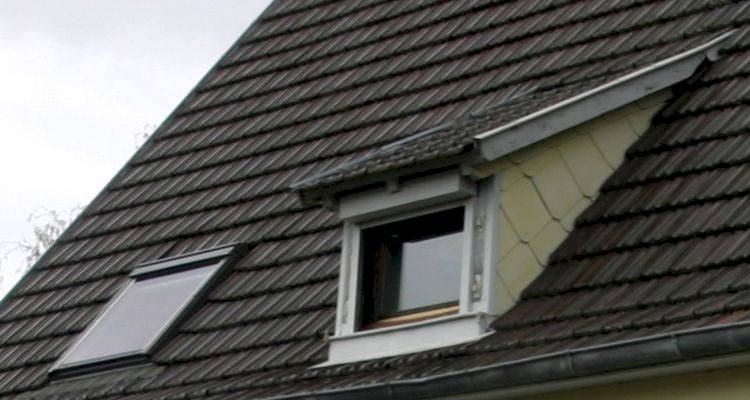
Grey Aluminium
Pros
- ✔ An alternative to standard aluminium, which can be dull to some.
- ✔ Cheaper than other metals.
- ✔ Not great with saltwater
- ✔ Doesn’t warp.
Cons
- ✖ Not great with saltwater
- ✖ Can appear a little bland on some properties.
- ✖ Not very energy efficient.
Copper
Copper is on the higher end of materials and can quickly add to the bill. Visually it is one of the most appealing and sought-after options, doesn’t suffer with warping, great with condensation and energy efficient.
Pros
- ✔ Makes a bold statement on appearance.
- ✔ Doesn’t have issues with warping.
- ✔ Relatively low maintenance.
- ✔ Excellent with moisture.
- ✔ Energy efficient.
Cons
- ✖ Very expensive.
- ✖ Can be an acquired taste when it comes to matching the rest of the home.
Titanium Zinc
Not such a common material but it is growing in popularity. The price on titanium zinc varies, depending on demand, so can be a little inconsistent when pricing up. However, it is very eco-friendly, works well with moisture and has low maintenance.
Pros
- ✔ Low maintenance.
- ✔ Resistant to corrosion.
- ✔ Works well with moisture.
- ✔ Eco friendly.
Cons
- ✖ The price can fluctuate depending on demand.
- ✖ Not as attractive as copper.
Coloured Aluminium
Relatively easy to maintain and cheaper than other metals, coloured aluminium is ideal for those looking for more customisable options but with less of a budget than copper.
Pros
- ✔ Many colour options that are anodized onto the metal.
- ✔ Cheaper than other metals.
- ✔ Relatively thin and looks stylish.
- ✔ Doesn’t suffer with warping.
Cons
- ✖ Easily corroded by saltwater if you live close to the sea.
- ✖ Is the least energy efficient metal as loses heat and quick to get cold.
- ✖ Prone to condensation.
Manual, Electric or Solar Powered Velux Window & Skylights?
The electric and solar options are mostly convenient so that you can use a remote to operate the window, with the latter saving on energy in the long term. Fundamentally, all the windows still operate the same way.
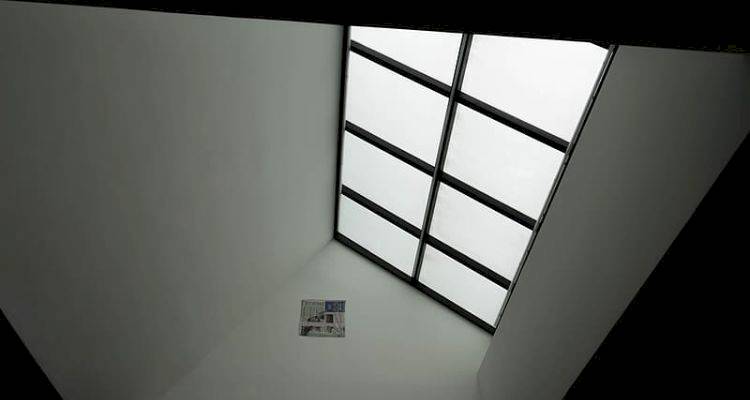
Manual Powered Velux Window & Skylights
The standard and cheapest option does have the exact same effect as the other options, though it is the least elegant and a little inconvenient unless you have a pole.
Pros
- ✔ Cheapest option.
- ✔ No reduction in function.
- ✔ Easy to install.
Cons
- ✖ Safety risks when it comes to standing on object to reach the handle.
- ✖ Time consuming.
Electric Powered Velux Window & Skylights
More expensive than the manual option, but significantly more convenient. Users can open the window with a remote control, or a switch affixed to the wall.
Pros
- ✔ Convenient.
- ✔ Reduces risk of injury.
- ✔ Aesthetically pleasing.
Cons
- ✖ Adds to the costs of energy.
- ✖ Expensive to install.
- ✖ If it breaks, difficult to open the window manually.
Solar Powered Velux Window & Skylights
The most expensive option but better for the environment, saving money in the long term when it comes to energy bills.
Pros
- ✔ Convenient.
- ✔ Also reduces the risk of injury.
- ✔ Good for the environment.
- ✔ Can be operated with a remote or switch on the wall.
Cons
- ✖ Very expensive.
- ✖ Relies on sun energy which isn’t the most effective in the UK.
- ✖ Difficulty in operating when there is no power.
Skylight Repair Cost
Repairing a skylight varies in price as it varies in the task. In most scenarios, the process involves replacing the window, but it may also mean updating additional materials like inner membranes of flashing kits (on average, the latter costs around £100).
- The average cost of replacing a small skylight will cost around £500, whereas a Velux of the same size will be slightly more at £550. Both options can be completed in around 4-6 hours.
- If replacing a large skylight, the price increases to £700 and a Velux window more likely to be £800. Again, the process is more or less the same so you can expect the work to be completed in 6-8 hours.
In addition, you could be looking at replacing additional roof tiles at 60p-£1 per tile as well as the roof lining if it has been exposed. Of course, reinstalling the window would mean ensuring it was watertight so using a sealant would assist that – expect to pay £3-£6.
Most professionals will quote for the job as a whole, but if the contractor was to expose a problem such as weakened timbers, you may have to pay for additional hours. The average hourly rate is going to be around, taking into account this may spike if you live in the London or South East areas.
Is it expensive to have a leak in a skylight window repaired? And is it generally time-consuming?
Hiring a Velux Window Fitter Checklist
The same applies to most checklists when you hire a professional, but there are a number of elements that apply when a profession will fit your Velux window.
- Get a minimum of two quotes from at least two different providers.
- Get the quotes in writing and ask about any additional charge or day rates if the work exceeds the estimated timescale.
- Discuss with the contractor what options are available and how they will specifically benefit your property, i.e. would it be structurally suitable for one large window or two smaller ones?
- Other than aesthetics, ensure that you are aware of the benefits of the materials used such as the type of glazing.
- View previous work the contractor has completed and seek out real testimonials.
- Check out their qualifications. While there aren’t specific qualifications needed for Velux window installers, they need to be familiar with the criteria in the Buildings Regulations so that you aren’t left with additional work once the job is completed. That said, it would be beneficial if they are a member of the Glass and Glazing Federation, and possibly a bonus if they’re listed under the Velux Certified Installer registry.
FAQs
What Velux roof window size do I need?
In these cases, two smaller windows may be better, and it’s recommended to have someone look at the property first. The size can also depend on the function, as you may want a larger window for your balcony to peer out or something more discreet that lets out any build-up of condensation in an en-suite.
What is a Velux window?
Do You Need Planning to Install Velux Roof Windows?
Factors that require planning permission:
- If the window protrudes more than 15cm of the roof’s plane.
- The project requires changes to the chimney, vent pipes, flue and/or solar panels.
- The window exceeds the roof ridge or is higher than the roof’s highest point.
- If the window is over 1.7m above the ground:
- It must be obscure glazed.
- Cannot be opened.
Generally speaking, the above won’t apply to most jobs, but in the event that you need to apply for planning permission, expect to pay around £206 for an application, which would fall under an application for extensions and garden buildings. For further information, it’s worth reviewing the Planning Portal website.
Is a Velux window safe for my children?
With most windows, they’re out of reach, but for balcony-based windows, there are numerous methods, such as locking devices and the method of installation, that make these as safe to have in your home as any other option.
Can a Velux window add value to my home?
Sources
https://www.planningportal.co.uk/info/200130/common_projects/47/roof/5
https://www.roofblinds.co.uk/catalog/other-products/accessories?gclid=Cj0KCQjwm9D0BRCMARIsAIfvfIaDuDaYtW5_VJ8gJrIpJ54DNXZ6wqbrob99WTYScwKJGKHVmJDaieIaAmcqEALw_wcB
https://www.velux.co.uk/roof-window-configurator




